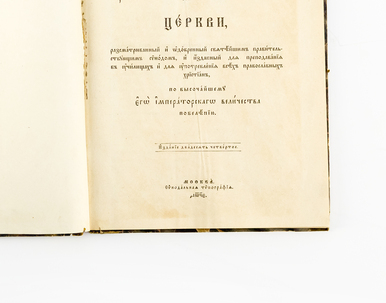A rare old photograph depicts the Western Tower of the Kazan Monastery of the Theotokos. It was part of the monastery wall and was used for observation and defense: its arrowslits made it possible to fire at the enemy. The photograph was taken after 1932 — by that time, most of the monastery buildings had already been destroyed by the Bolsheviks. The tower has survived to the present day, although the other objects from the photograph are no longer there.
The Kazan Monastery of the Theotokos is the most famous Orthodox monastery in Kazan. It was founded in 1579 in a sacred place, where a girl, whose name was Matrona, found the Kazan Icon of the Mother of God with the help of the Virgin herself. Numerous pilgrims came to the monastery every year to worship the miraculous image.
In the 19th and early 20th centuries, the monastery was one of the largest and most beautiful in Russia. More than 500 nuns and novitiates lived there; the monastery had its own lands, hay mows, fishing grounds, a flourmill, and a cattle yard. In the Exaltation of the Cross building alone, there was a general refectory, a painting school, a sacristy, a sewing workshop, a bakery and a brewery.
After the October Revolution of 1917, the monastery shared the sad fate of many Russian Orthodox monasteries: the state took its lands and nationalized the buildings. The 1930s saw the most difficult events: the Bolsheviks demolished the stone walls, blew up the main monastery cathedral and the highlight of the architectural ensemble — the six-tier bell tower of the 17th century, which was the tallest in Kazan and was 55 meters tall (somewhat like a modern 15-storey building).
In the 1940s, a tobacco factory was opened on the territory of the monastery, and in the 1960s, five-story “Khrushchev” buildings were built on the site of the monastery garden. The Faculty of Philology of the Pedagogical Institute moved into the premises of the Exaltation of the Cross Church, and the townspeople added garages to the church building.
After the collapse of the USSR, the revival of the monastery began: in 1994, the Sophia Church was returned to the believers, in 2004-2005, the large Holy Cross Church was restored. July 21, 2005 became an important date. On this day, Patriarch Alexy II handed over the Vatican copy of the Kazan Icon of the Mother of God to the Kazan diocese. Today the image is housed in the Church of the Exaltation of the Cross, and many pilgrims come to worship it every day.
The Kazan Monastery of the Theotokos is the most famous Orthodox monastery in Kazan. It was founded in 1579 in a sacred place, where a girl, whose name was Matrona, found the Kazan Icon of the Mother of God with the help of the Virgin herself. Numerous pilgrims came to the monastery every year to worship the miraculous image.
In the 19th and early 20th centuries, the monastery was one of the largest and most beautiful in Russia. More than 500 nuns and novitiates lived there; the monastery had its own lands, hay mows, fishing grounds, a flourmill, and a cattle yard. In the Exaltation of the Cross building alone, there was a general refectory, a painting school, a sacristy, a sewing workshop, a bakery and a brewery.
After the October Revolution of 1917, the monastery shared the sad fate of many Russian Orthodox monasteries: the state took its lands and nationalized the buildings. The 1930s saw the most difficult events: the Bolsheviks demolished the stone walls, blew up the main monastery cathedral and the highlight of the architectural ensemble — the six-tier bell tower of the 17th century, which was the tallest in Kazan and was 55 meters tall (somewhat like a modern 15-storey building).
In the 1940s, a tobacco factory was opened on the territory of the monastery, and in the 1960s, five-story “Khrushchev” buildings were built on the site of the monastery garden. The Faculty of Philology of the Pedagogical Institute moved into the premises of the Exaltation of the Cross Church, and the townspeople added garages to the church building.
After the collapse of the USSR, the revival of the monastery began: in 1994, the Sophia Church was returned to the believers, in 2004-2005, the large Holy Cross Church was restored. July 21, 2005 became an important date. On this day, Patriarch Alexy II handed over the Vatican copy of the Kazan Icon of the Mother of God to the Kazan diocese. Today the image is housed in the Church of the Exaltation of the Cross, and many pilgrims come to worship it every day.



